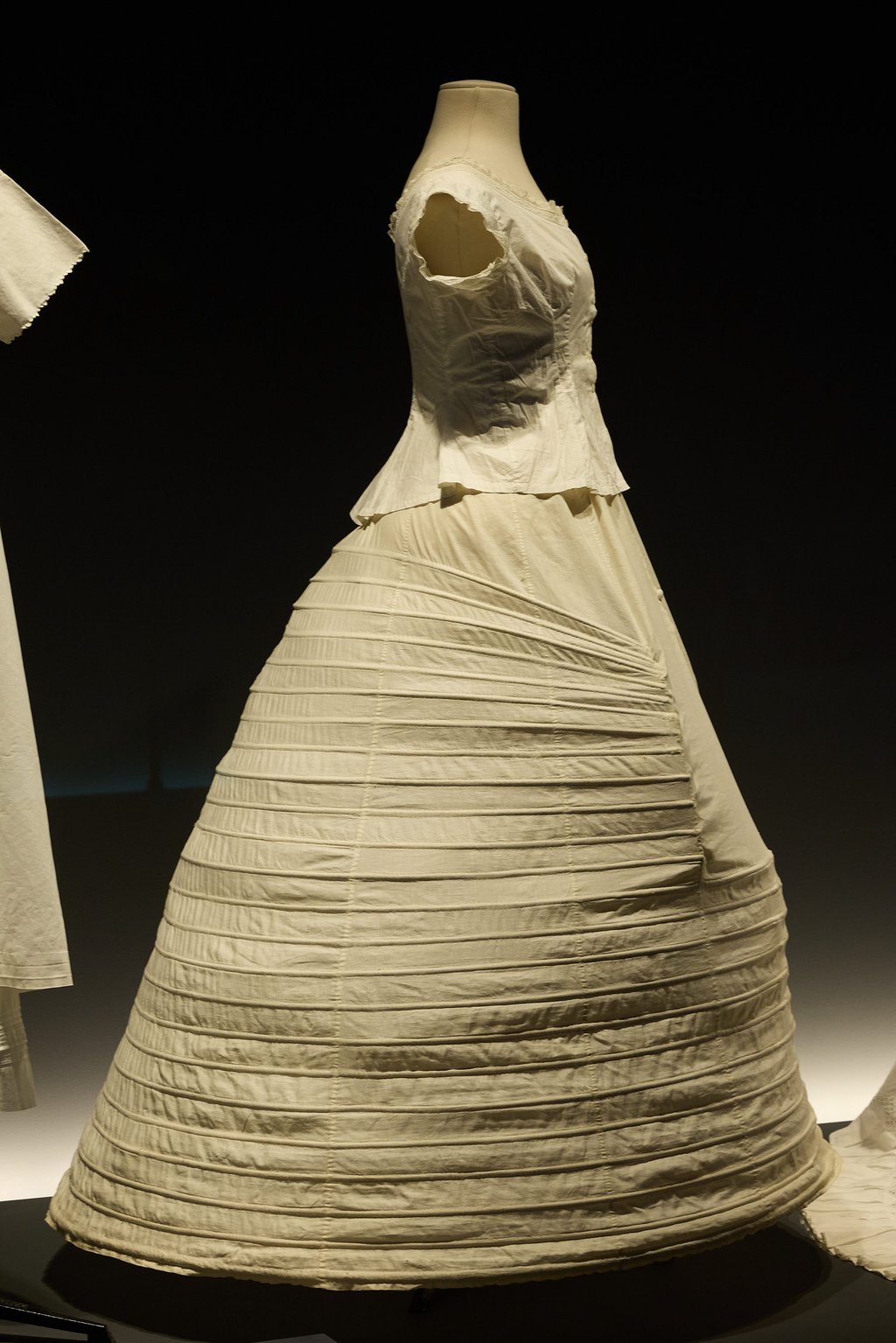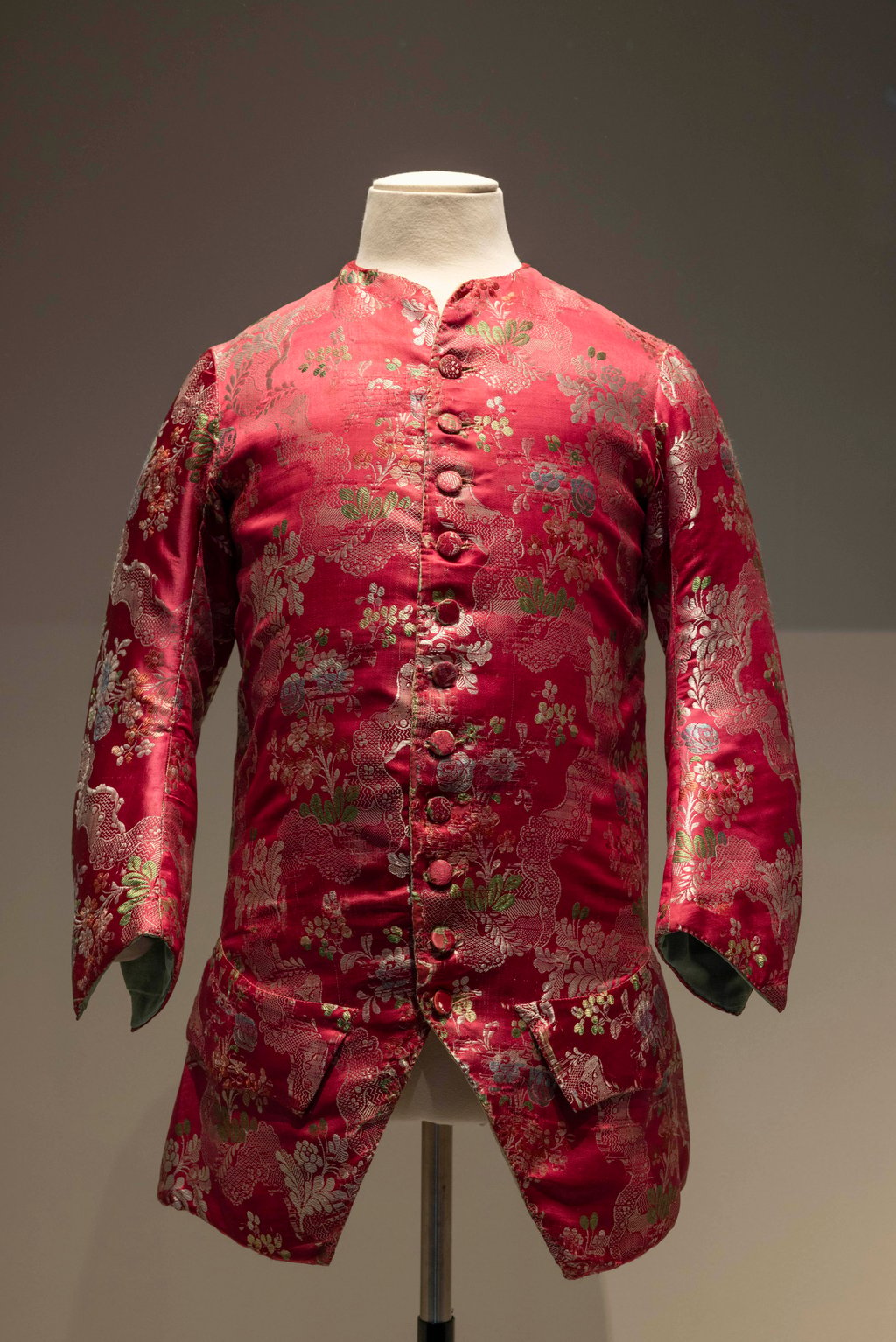Fashion
From Napoleon to Vivienne Westwood: 18th century fashion still inspires catwalks today

At the recent Paris Fashion Week, haute couture from the planet’s most renowned fashion houses was paraded and admired.
Not for the first time, collections and designs nodded to past trends, but this year, Vivienne Westwood’s always eclectic label (designed by Andreas Kronthaler) took direct inspiration from the courts of pre-revolutionary France.
Models sashayed as always, but the keen-eyed would have spotted on one outfit an 18th century accoutrement – the “stomacher”, a triangular panel made rigid with whalebone, filling the front opening of a dress. This ensemble was cut low at the front, leaving the collarbone exposed, the skirt a triangle high enough to entirely reveal the legs.
For those who missed the Westwood collection in Paris, one exhibition, at the Hong Kong Palace Museum, allows sartorial design to be unpicked for greater understanding of its history and continued influence. “The Adorned Body: French Fashion and Jewellery 1770-1910 from the Musée des Arts Décoratifs, Paris” also sheds light on the fascinating ways in which fashion and couture shaped the body and marked out the wearer’s social standing.
“Not only is it very rare to see these kinds of clothes, especially here in Hong Kong, but it is particularly interesting to have them in the Palace Museum, because it offers the possibility of comparing European and Chinese fashion,” says Dr Ingrid Yeung, associate curator at the Hong Kong Palace Museum, which jointly curated the show with the Musée des Arts Décoratifs.

The exhibition comprises nearly 400 objects, ranging from well-preserved dresses from more than two and a half centuries ago, to a vast and fascinating array of underclothing, known in fashion as foundational garments. Think lifting and constricting corsets, ample petticoats (which are soft) and crinolines (stiff or structured), and underskirts. Also on display are accessories such as shoes, fans, hats and jewels.
Then there are exquisite mini-me fashions. Near the start of the exhibition is a doll from the mid-19th century, complete with a vast, stylish wardrobe that includes under and outer garments, accessories, shoes and little jewels. These dolls were not only used by young, upper-class girls as toys, they were also employed by couturiers all over Europe, who would use the dolls’ clothing as a reference to imitate the latest fashion trends in Paris.
The show continues with a gentleman’s habit à la française and a female court dress, in full 18th century splendour, something a noble man or woman would have worn for a royal reception before the French Revolution in 1789 – when the aristocracy was forced to exit the scene.

These opening displays are important not just because they are striking: they underscore styles and fabrics that recur in different forms, illustrating the cycles of fashion. The suit-like garment, for example, with its lavish embroidery, evolved into the simplified contemporary male suit. And the striped silk used for the court dress also made a return in other garments.
A pinstripe suit from the early 20th century, Yeung says, “can be traced back to the stripes we saw in the 18th century”.
Another detail in this court dress relevant through the ages was the stomacher.
“The stomacher […] had to be sewn on and sewn off every time the woman was wearing it,” says Yeung, pointing to other exhibits showing how patterns, shapes and decorations returned periodically.

Organised chronologically, the exhibition is divided into five themes: Court Splendour (1770-1790); Sense and Sensibility (1810-1830); Tradition and Innovation (1850-1860); The Birth of Luxury (1880); and The Belle Époque (1890-1910). The exhibits underscore societal changes, which are reflected in how restrictive women’s garments were. For instance during the late 19th century and early 20th centuries, with the rise of the bourgeoisie and more women engaging in business, fashions became more practical and less constricting.
One of the most glorious and prominent items is a dress from 1885, designed by Charles Frederick Worth (1825-1895), considered the father of haute couture. Worth’s fashions were not just accessible to nobility but also to anyone with enough money, inherited or self-made, to afford them.
Moving through the exhibition, viewers see fashion come to life in clips from period films selected by Yeung. Faithful reconstructions of apparel, and how they were layered when worn, can be appreciated in films such as Sofia Coppola’s Marie Antoinette (2006) and The Leopard (1963), by Luchino Visconti.

Not surprisingly, the garments that survived belonged to the wealthiest, the main reason being that working-class clothes were often worn until threadbare and then cut into rags.
Interestingly, politics at large is also on display: some of the fabrics and designs are clearly inspired by China and Japan, a reflection both of the fascination with “exotic” cultures and the colonialist expansion of European powers in the 18th and 19th centuries.
Chinoiserie, Japonisme, as well as neoclassical styles drawing on ancient Rome and even Egypt – all the rage after Napoleon’s campaign there in 1798-1801 – took their turn at the forefront of French style.
This was also a trend in paintings, applied arts and interior design. But through the clothes at the Palace Museum we see how people chose to adorn and dress themselves with inspirations from Asia.

A few items in particular highlight this interest in the East, including an indoor jacket from France in red silk decorated with Chinese-style motifs. There is also a pale-blue silk-and-cotton kimono with chrysanthemums embroidered on the back, made in the United States around 1910-1919 and owned by a French gentleman who used it as a dressing gown.
Then there are recurring paisley motifs, originating from India, on shawls and textiles. Even in far less connected times, these first objects of early globalism show how much clothing reveals about our times, our society, our politics and our values.
“We want to portray the evolution of adornment,” says Yeung, “and it is a way for us to juxtapose, in a museum mostly dedicated to Chinese culture, the Other and the Self, [allowing] us to see more about both cultures.”










